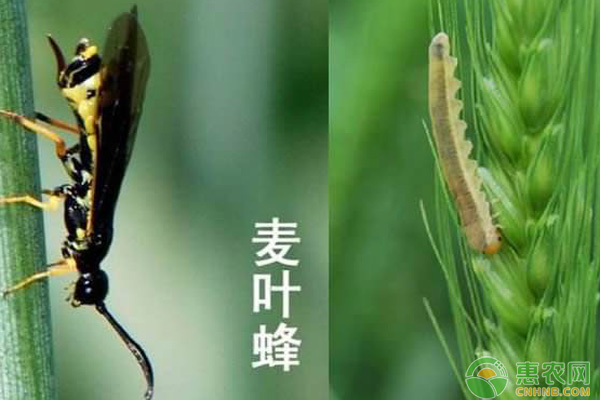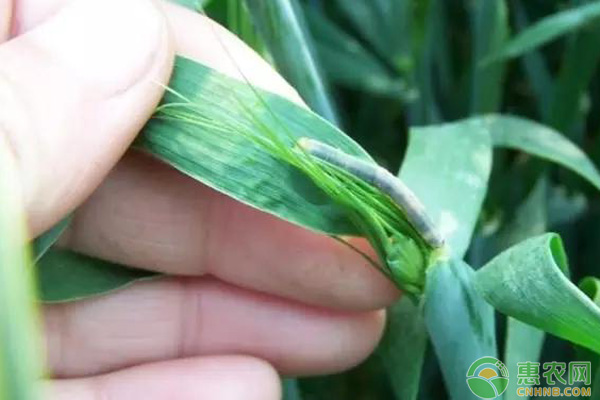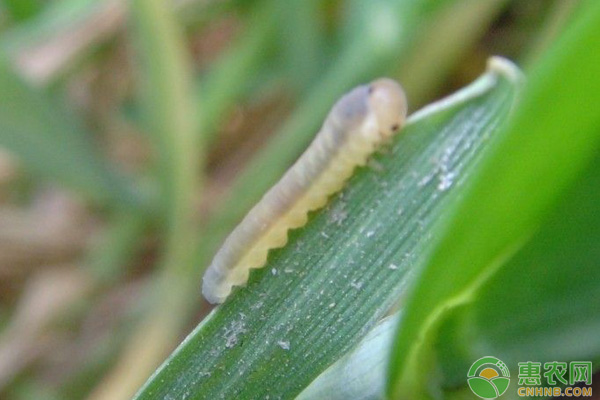Wheat is a large-scale crop in the northeastern part of China. In the process of growing wheat, pest control is very important. The common pest in the wheat growing season is the wheat leaf bee, so what harm does the wheat leaf bee have on wheat? Do you know how to control it? Let's take a look at it.

Wheat leaf bee
The wheat leaf bee is wintering in the soil. When the wheat is green, the adult is unearthed and lays eggs in the wheat leaf. The young larvae of the wheat leaf bee feed on the leaves during the day, and when they grow up, they hide in the wheat rhizosphere during the day and climb out to damage the leaves at dusk. Before the wheat picks up the flag, the tip of the leaf is fed, and the incision of the damaged leaf is neat, so the wheat leaf bee is also called the worm, the wheat worm. The larvae are bright green with three pairs of chest feet and 8 pairs of gastropods. Before the wheat matures, the larvae of the wheat bee larvae enter the soil for wintering and wintering.

The damage of wheat leaf bee to wheat
The wheat leaf bee is a small armyworm that people often say. It eats wheat leaves by larvae, biting into nicks from the edge of the leaves or tying them down from the tip of the leaves, causing half of the wheat leaves. Generally, if the number of wheat leaf bees is small, it has little effect on wheat growth and yield, and it is not necessary to prevent and control. However, if it is the year of occurrence or the plot of insects, the number of larvae per square meter can reach hundreds or even more. The damaged wheat has almost no intact leaves, which directly affects the photosynthesis of wheat leaves, especially the flag. Leaf damage directly affects wheat grain filling and 1000-grain weight. Therefore, the number of wheat leaf bees is large to prevent, otherwise it will cause wheat to reduce production.
Method for controlling wheat leaf bee
Method 1: Before the wheat picking flag, when the larvae of the wheat leaf bee larvae reaches 60 heads per square meter, the application of the medicine is controlled, and the morning and evening spray control effect is good. 40% omethoate 1000-1500 times liquid, 50% phoxim emulsifiable concentrate can be selected. 1000 times liquid and other sprays.
Method 2: 3-4 months is the young larvae of the wheat leaf bee, and it is also the best period for the treatment. Especially when the wheat is green, the wheat field with high density and good moisture should be observed. The number of larvae reaches 50 plots per square meter. Or high-density spotting in the plot must be controlled by chemicals. Use 30 ml of pyrethroid pesticide plus 50% phoxim 50 ml; or 50 ml of chrysanthemum plus 10 ml of 5% canon salt. A bucket of water spray per acre.

The above is about the prevention and control of wheat wheat leaf bee. As a common pest in wheat cultivation, the control of the wheat leaf bee must be understood, although sometimes it is not enough to threaten the wheat yield, etc. When it is really large, it will be prevented, so that wheat has already caused damage, and prevention is also late. Therefore, it is best to take precautions in the growth period to be the best.
Disposable Products,Disposable Scissors,Disposable Camera Sleeve,Laparoscopic Disposable Trocar
ZHEJIANG SHENDASIAO MEDICAL INSTRUMENT CO.,LTD. , https://www.shendasiaomed.com